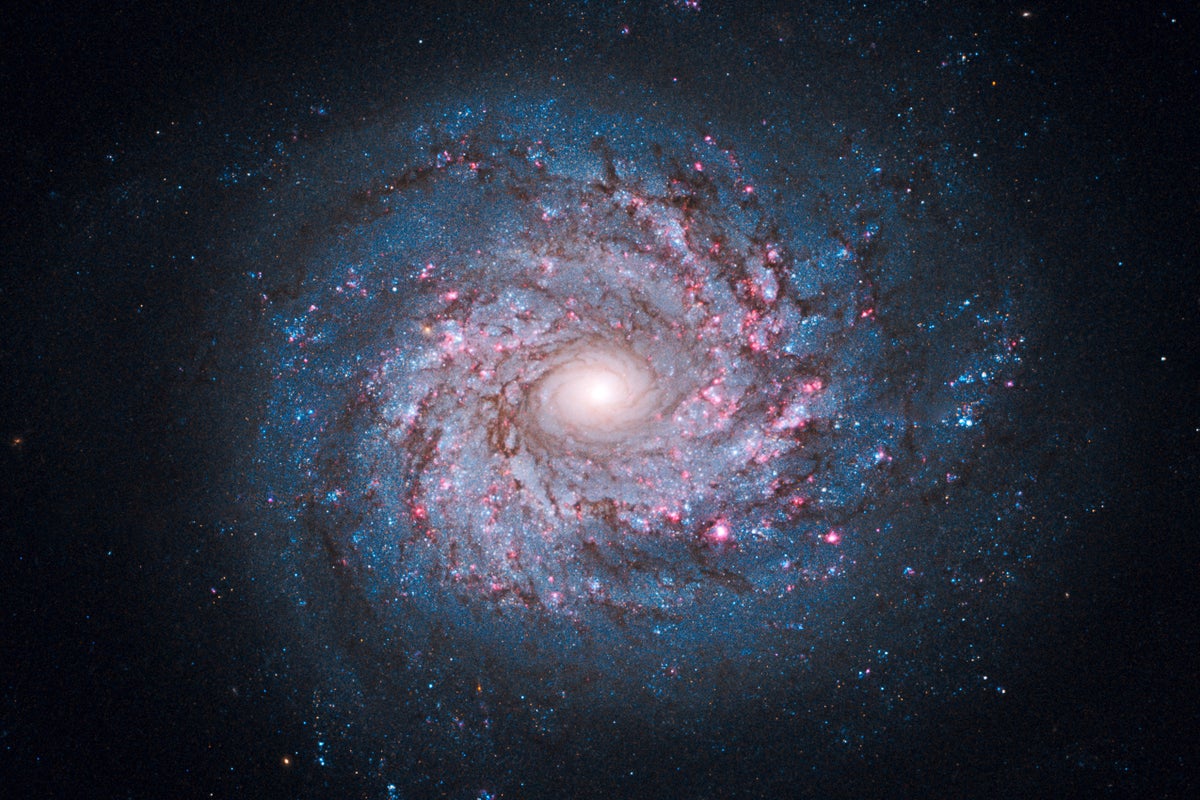
If you’ve been reading this column lately, you might have noticed a recent trend where I try to answer some deceptively simple questions: What is a planet? What is a moon? What is a star? A recurring theme here is that it’s hard to define such terms because definitions are, well, definite, while nature is seldom so.
In keeping with both trend and theme, it’s time to take a step outward—a big step.
What’s a galaxy?
On supporting science journalism
If you’re enjoying this article, consider supporting our award-winning journalism by subscribing. By purchasing a subscription you are helping to ensure the future of impactful stories about the discoveries and ideas shaping our world today.
The word itself comes from galaktikós kyklos, or “milky circle,” the ancient Greek term for the Milky Way, our home galaxy.
In modern times, though, we use “galaxy” more generically to refer to any large system of stars, gas, dust and dark matter, all held together by their mutual gravity. That’s actually not a bad definition, except for the small fact that not every galaxy has all these features. There are galaxies without any detectable gas and dust, and some that seem to have little or no dark matter. I suppose the common thread is that they do all have stars, but even then we run into trouble because not all gravitationally bound systems of stars rate as galaxies.
Very generally speaking, galaxies are tens of thousands to hundreds of thousands of light-years across and have millions to several trillions of stars. Our Milky Way, for example, is about 120,000 light-years wide and contains somewhere between approximately 100 billion to 400 billion stars. It’s hard to get even a rough number because faint red dwarfs are the most common kind of stars, but they’re so dim they fade to invisibility even relatively close to our solar system.
Still, we do know the overall shape of our galaxy, which is a gigantic flattened disk with a central bulge of older, redder stars that is about 20,000 light-years wide. The structure of the disk is dominated by four major spiral arms and several smaller ones. These arms are dotted by huge clouds of gas and dust from which stars are born. Many of these stars are massive, luminous and blue, giving the spiral arms their characteristic azure hue. Because we’re inside the galaxy, mapping it is difficult, so many details of its structure remain to be determined.
Spirals are only one of four major classifications for galaxies; the others are elliptical, irregular and peculiar.
Elliptical galaxies would be better called spheroidal; they can be spherical but are more commonly elongated, a bit like a cotton ball. Some of the largest galaxies we know are elliptical, like the mighty M87 galaxy, which has several trillion stars. M87 sits in the center of the Virgo Cluster—a large group of galaxies bound together by gravity that boasts about 2,000 members. In fact, such giant ellipticals are common in the centers of galaxy clusters. These galaxies grow by eating other ones, both large and small, that venture too close to the cluster core, so the elliptical shape itself may be caused in part by this cannibalism process.
Not all ellipticals are huge, though: many are quite small. These are called “dwarf elliptical galaxies” and are satellites of larger galaxies. The Andromeda galaxy, for example, has many dwarf ellipticals orbiting it.
Ellipticals don’t have much gas in them, if any. They appear to have exhausted essentially all their gas by making stars long ago. Massive blue stars don’t live long; they explode as supernovae within millions of years of their birth, so a few billion years after its gas is depleted, an elliptical galaxy will look very red, dominated by ruddier lower-mass stars.
Peculiar galaxies are rare. They have all sorts of shapes but tend to be, well, odd. They are usually the result of galactic collisions, train wrecks on a cosmic scale. The mutual gravity of two interacting galaxies stretches and distorts their otherwise regular shapes, creating long, curving tails of flung-away stars. Sometimes, if a smaller galaxy plows right through the center of a larger one, the collision creates a ring galaxy, in which the stars and gas are splashed away from the larger galaxy’s center like ripples on a pond after a rock is dropped in.
Finally, there are the irregulars. These tend to be on the small end of the galactic scale and, as their categorization suggests, have no overall shape. The Small Magellanic Cloud (or SMC), a companion satellite of the Milky Way, is an irregular galaxy. Its sibling, the Large Magellanic Cloud (LMC), appears irregular at first by eye, but we now know it has some structure in it in the form of a single spiral arm. Both of these galaxies are small compared to the Milky Way; the SMC has a few hundred million stars and is just under 20,000 light-years across, while the LMC has billions of stars and is just more than 30,000 light-years wide.
The existence of the irregulars raises an important question: How small can a galaxy get? The current paradigm is that galaxies initially formed shortly after the big bang. Huge clouds of invisible dark matter accumulated regular matter (in the form of gas) via gravity, which eventually collapsed to form galaxies and the stars in them. A study published in April 2025 in the Astrophysical Journal Letters showed that there is a minimum mass needed for such a dark matter cloud to cause the normal matter to collapse, and it’s around 10 million times the mass of the sun. This may, then, be a lower limit on the smallest galaxy that can form.
But this lower end of the galactic scale is still rather murky, in part because the stars that serve as observable tracers of small galaxies can form even smaller structures called star clusters. One kind, called open clusters, can have thousands of stars in them. Globular star clusters, on the other hand, can host tens of millions of stars that total up to several million times the mass of the sun. Even the biggest known globular cluster (about 150 light-years or so across) is still smaller than a dwarf galaxy. We think that many of the largest of these clusters, such as Omega Centauri, actually once were dwarf galaxies themselves, however. Their shrunken state is from multiple passes near a larger galaxy that stripped them of stars, leaving a smaller, more compact object behind.
What do we call Omega Centauri, then? A huge globular cluster or a partially digested dwarf galaxy? Also, some dwarf galaxies appear to contain no dark matter, and some have far fewer stars than expected, even below the theoretical lower limit, further confusing the issue. At the smaller end, it seems, the border becomes irritatingly fuzzy. That, too, is a recurring theme when we try to create rigid definitions for cosmic objects. Humans love sharp delineations, but the universe is under no obligation to obey them.
One last thing: in 2016 a study showed that the universe may contain as many as two trillion separate galaxies. The cosmos clearly likes making galaxies, and however you define them, there are a vast number for us to study and learn from.
